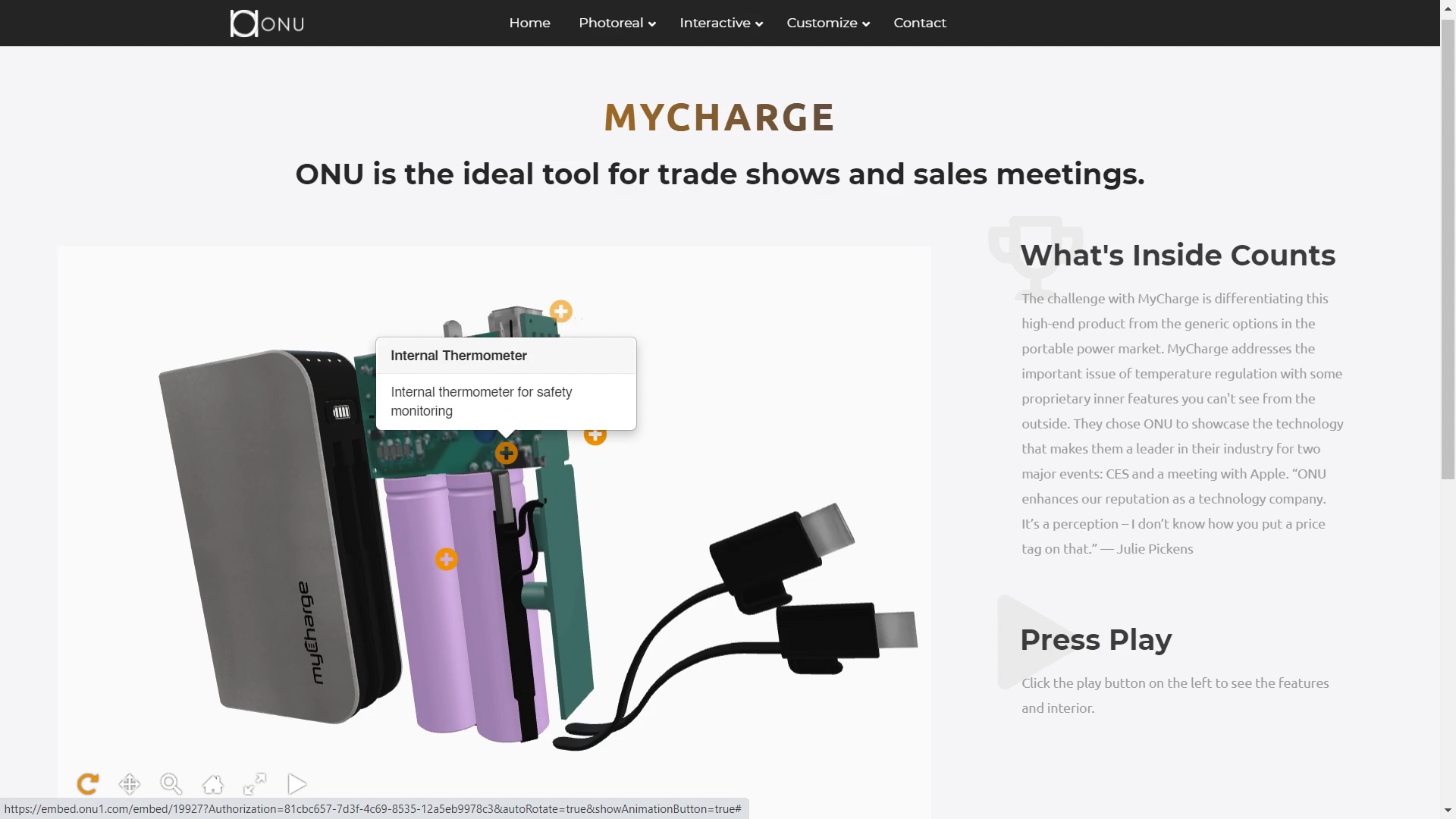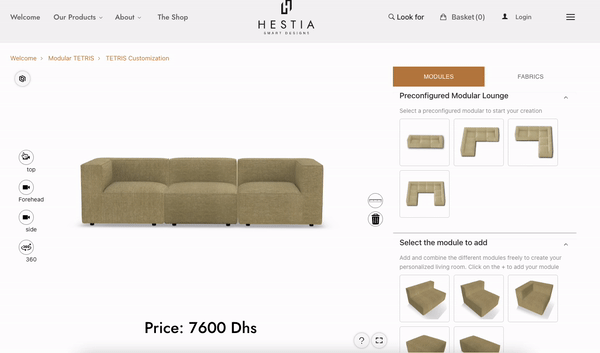The Triple Bottom Line of Reducing eCommerce Returns
In eCommerce, approximately 20% of purchases are returned - nearly double the rate of in-store purchases. eCommerce returns also generate significantly higher waste than in-store returns. In fact, 10 percent of online returns are donated or incinerated. As a result, in the US alone returns lead to 5 billion pounds of landfill waste and 15 million tons of carbon emissions every year.

In sustainability terminology, the triple bottom line (which is sometimes called “the three pillars” or “the three Ps”) describes People, Planet and Profit. To build a sustainable organization, businesses must consider all three. This includes their impact on people's ability to live with liberty in a healthy environment; their impact on wildlife and the environment; and of course, their ability to generate profit.
The profit pillar is an important one - society will benefit from businesses that minimize their impact to people and planet, but they will only survive if they generate economic profit.
Reducing eCommerce product returns generates another “triple bottom line” closely tied to profit: improved customer satisfaction, reduced costs, and increased revenues. In short, reducing returns has a multiplier effect.
The opportunity
According to Walker Sands, offering free returns or exchanges is 54% more likely to make somebody shop online. This is because it provides customers with confidence.
With the techniques covered in this post, an ecommerce store can have the confidence to implement such a policy, knowing they have implemented powerful strategies to reduce returns and boost customer satisfaction.
Ultimately, taking control of return rates will allow your business to see return policies as strategic opportunities instead of risk aversion tools. The final result will be more traffic, higher revenue, reduced costs, happier customers, and lower environmental impact.
How to reduce returns
1. 3D configuration and augmented reality
 Shameless plug: Threekit’s 3D configuration and AR technology has helped reduce returns by 80%.
Shameless plug: Threekit’s 3D configuration and AR technology has helped reduce returns by 80%.
How? The photorealistic visual experiences we deliver provide the most immersive, tangible eCommerce experience available to consumers. Customers can “feel”, as close as they can through their computer or mobile device, what they’re purchasing by customizing it, manipulating it, or seeing what it looks like in their space.
2. Clear call to action for customer service
According to efelle creative, a top web design firm in Seattle, a clear call to action on how to reach customer service can be crucial to reducing returns. It’s also important to include this on both the product page and on post-purchase materials.

“Whether it's a chat-bot, FAQ, or Help button, make it easy for the client to reach out if they have questions when looking to buy a product. At the same time, make sure your packaging includes contact information for any post-purchase questions. Customer service reps can often answer questions or share helpful tips that may help customers better understand the products.”
3. Reverse logistics management
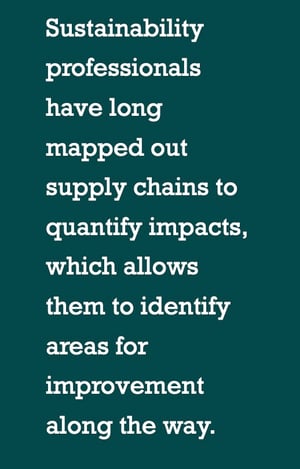 Research has found that retailers can reduce returns by 30% by mapping out their return logistics, identifying areas of opportunity for efficiency, and collecting and analyzing performance data to identify innovative ways to reduce returns.
Research has found that retailers can reduce returns by 30% by mapping out their return logistics, identifying areas of opportunity for efficiency, and collecting and analyzing performance data to identify innovative ways to reduce returns.
Sustainability professionals have long mapped out supply chains to quantify impacts, which allows them to identify areas for improvement along the way. This is no different, except that it takes a more customer-centric approach. For example, KPIs measured would include collecting return data provided by customers to uncover prominent reasons for returns. These measures provide organizations with the insights needed to devise mitigation strategies.
4. More lenient return policies
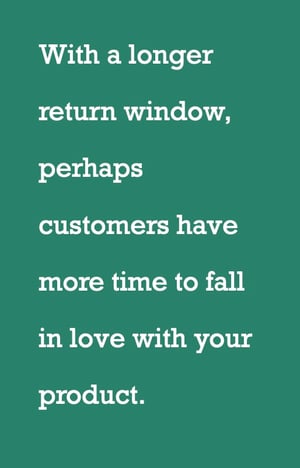 This may sound counterintuitive, but customers have been shown to reduce their returns when given longer windows to return items. In fact, 45-90 day windows may be best for this.
This may sound counterintuitive, but customers have been shown to reduce their returns when given longer windows to return items. In fact, 45-90 day windows may be best for this.
Why? Because customers are more likely to feel a sense of urgency to return quickly with shorter return windows.
In addition, customers are more likely to wait until the last minute to return. With a longer return window, perhaps customers have more time to fall in love with your product.
Back to sustainability
Okay, so we have reduced returns by a lot. That makes it all better, right?
Not just yet! There are a few ways you can go above and beyond hitting that triple bottom line. Here are a few more ideas:
1. Reinvent what waste is left
This is simple: If you can donate, recycle, or repurpose returns that were otherwise being sent to the landfill or incinerator, do it! Your products are extremely valuable, which is why you make a living selling them. Don’t allow that value to be wasted.
The added benefit of this is you can find innovative ways to benefit local organizations and charities. Be creative, and focus on how you can use those returns to benefit others.
2. Communicate your efforts
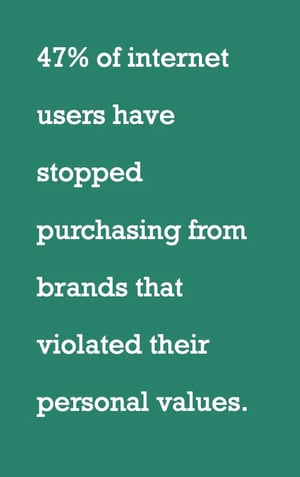 Tell the world how you’re making a positive impact. If you reduced waste by 75%, tell your customers. If you donated returns to local organizations, share that, too.
Tell the world how you’re making a positive impact. If you reduced waste by 75%, tell your customers. If you donated returns to local organizations, share that, too.
Why? Because 47% of internet users have stopped purchasing from brands that violated their personal values. Displaying strong values is a critical piece of developing an emotional connection with your customers, and this is a great opportunity to illustrate them.
3. Iterate
You need to keep improving, because your competitors will keep improving.
How can you keep innovating to find new ways to delight customers, reduce waste, and drive revenue? Let’s discuss! Book some time - we’d love to meet you.

